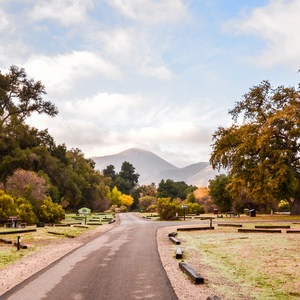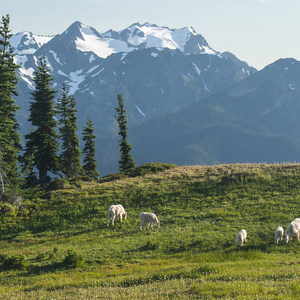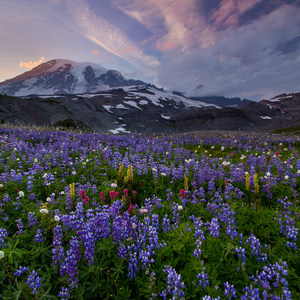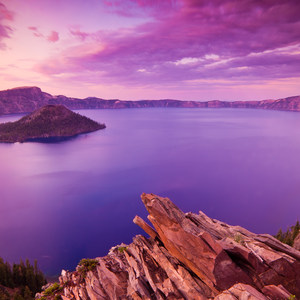You are here
On August 25, 1916, President Woodrow Wilson signed the act creating the National Park Service. The “Organic Act” states that the fundamental purpose of the NPS “is to conserve the scenery and the natural and historic objects and the wild life therein and to provide for the enjoyment of the same in such manner and by such means as will leave them unimpaired for the enjoyment of future generations.”
The National Park Service turned 100 last year, and they've been busy. They continuously work to protect 407 sites with 28 different designations. These include 127 historical parks or sites, 78 national monuments, 59 national parks, 25 battlefields or military parks, 19 preserves, 18 recreation areas, 10 seashores, four parkways, four lakeshores, and two reserves.
As you start planning your summer vacations, consider our national parks. Here are few things you may not know about these amazing places right here in the good old U.S. of A.
- The National Park Service protects over 84 million acres of wild landscapes and historic sites.
- Yellowstone National Park (in Wyoming, Idaho, and Montana) is the oldest U.S. national park, founded in 1872.
- The second U.S. national park created is no longer a national park. Mackinac National Park in Michigan was established in 1875 and was returned to the state in 1895. It is now one of Michigan's State Parks.
- Three of the 10 highest waterfalls in the world are located in Yosemite National Park in California.
- Ribbon Falls in Yosemite is nine times taller than Niagara Falls.
- One of the hottest temperatures on earth was recorded in 1913 in Death Valley National Park, registering 134 degrees.
- The Grand Canyon, in Grand Canyon National Park in Arizona, is known as one of the Seven Natural Wonders of the World.
- National parks are home to life on a big scale: Sequoia trees are some of the world's largest living things, and Alaskan brown bears are some of the world's largest carnivores.
- California's Sequoia National Park is home to the largest living single-stem tree in the world, the wonderfully named General Sherman. The tree is approximately 275 feet tall and weighs approximately 1,900 metric tons.
- When a giant sequoia tree fell and blocked a road in Sequoia National Park in California in 1937, the National Park Service simply created a tunnel through the 275-foot by 21-foot tree.
- Wrangell-St. Elias National Park, Alaska, is the largest national park, covering 13,000 square miles or 13.2 million acres.
- Death Valley National Park is the largest national park in the lower 48 U.S. states, stretching 5,300 square miles or 3.4 million acres.
- The smallest national park is Hot Springs National Park in Arkansas, coming in at about 5,500 acres. This was actually the first federally protected piece of land in 1832. It was not named a national park until 1921.
- Great Smoky Mountains National Park is the most visited national park with more than 9 million guests per year, followed by Grand Canyon National Park, which gets more than 4 million visits per year.
- Mount McKinley in the Alaska Range of Denali National Park is the highest point in the national parks at 20,302 feet.
- Additionally, Denali National Park has the widest range of elevations, from 200 feet in Yentna River to 20,302 feet at the summit of Mount McKinley.
- The parks are also home to the lowest point in the western hemisphere: Badwater Basin in Death Valley, California, is 282 feet below sea level.
- You can visit two parks in a day if you visit Yellowstone National Park and Grand Teton National Park. They are just 10 miles apart in northern Wyoming.
- California and Alaska each have eight national parks.
- Arches National Park is famous for having the largest concentration of stone arches in the world.
- Utah’s five national parks are all within easy driving distance of each other, which means that you can cross off five national parks from your “bucket list” on just one trip.
- The Colorado River and the Green River flow through Utah’s national parks, offering some of the best whitewater rafting anywhere in the country.
- Everglades National Park protects more than 25% of Florida's original everglades (subtropical wetlands).
- Dry Tortugas National Park in Florida is known for its world-renowned concentration of turtles.
- Alaska is home to one of the least visited national parks: Kobuk Valley National Park receives just 3,000 visitors per year.
- Trail Ridge Road in Rocky Mountain National Park, which connects Grand Lake and Estes Park, is the highest continuously paved road in the U.S., and it includes breathtaking views and vistas along its entire 48 miles.
- Mesa Verde National Park was the first national park to be recognized for “works of man,” an acknowledgement of the incredible cliff dwellings left behind by the Pueblo Indians.
- Mammoth Cave National Park in Kentucky has the longest cave system in the world with more than 3,454 mapped miles.
- Carlsbad Caverns National Park in New Mexico is home to the nation's deepest cave, which is 1,593 feet deep.
- At 1,932 feet deep, Crater Lake National Park in Oregon is the deepest lake in the U.S.
- There are two national parks located north of the Arctic Circle: Gates of the Arctic National Park
and the Kobuk Valley National Park. Both are obviously in Alaska.
- The smallest national park unit is part of a part of an acre in downtown Philadelphia, the Thaddeus Kosciuszko National Memorial.
- Abraham Lincoln and Teddy Roosevelt have the most sites named for them:
Abraham Lincoln Birthplace National Historic Site (Kentucky),
Lincoln Memorial (D.C.),
Lincoln Boyhood National Memorial (Indiana),
Lincoln Home National Historic Site (Illinois),
Theodore Roosevelt Island (D.C.),
Theodore Roosevelt Birthplace National Historic Site (New York),
Theodore Roosevelt Inaugural National Historic Site (New York),
and Theodore Roosevelt National Park (North Dakota).
- National parks are home to a former federal prison, Alcatraz in Golden Gate National Recreation Area, California, and a leper colony, Molokai Island Hansen's Disease Settlement in Kalaupapa National Historic Site, Hawaii.
- The national parks include 2,000 miles of the Appalachian National Scenic Trail that stretches from Maine to Georgia, a 37-mile-long barrier island (Assateague Island National Seashore, Maryland), and a 184-mile-long canal from Washington, D.C., to Cumberland, Maryland (C&O Canal National Historical Park).
- Forty million years of mammalian history is preserved in fossils at the John Day Fossil Beds National Monument in Oregon.
- The national parks are home and habitat to more than 400 endangered or threatened plant and animal species.
- Seneca Falls National Park in New York is the location of the First Women’s Rights Conventions, which discussed expanding rights of women in the mid-19th century.
- Wind Cave National Park in South Dakota is the first cave to be named a national park in the world.
- National parks and national monuments are sometimes confused. National parks are chosen for their natural beauty, unique geological features, and unusual ecosystems.
- Only one state in the country is not lucky enough to currently have either a national park or national monument. It is actually the country’s first state, Delaware.
- The Yellowstone Caldera, Yellowstone National Park, is a super volcano that is responsible for three of the world’s six biggest volcano eruptions.
- Located 70 miles from Key West in the Gulf of Mexico, Dry Tortugas National Park is a collection of seven tiny islands that can be reached only by boat or plane, making it the country's most remote national park.
- In August, 2014, authorities at California's Sequoia National Park found a $36-million marijuana-cultivation operation just half a mile from a popular tourist site.
- White Sands National Monument spans more than 176,000 acres of New Mexico desert and contains the largest gypsum dune fields in the world.
- The National Park of American Samoa is the only National Park Service site south of the equator. It covers 13,500 total acres: 9,500 land acres and 4,000 marine acres, which are mostly coral reefs.
- Mauna Loa Volcano in Hawaii Volcanoes National Park is the largest volcano on earth both in terms of volume and height above its base. It contains about 19,000 cubic miles of lava and rises more than 50,000 feet above its base, including the portion which is beneath the ocean.
- There are 25 active glaciers and more than 700 lakes of various sizes inside Glacier National Park.
- Mount Rainier is the most glaciated peak in the contiguous U.S. with 26 major glaciers.
- Bears have not killed a single person in Olympic National Park, but a mountain goat, which is not a native species to the region, killed a man in 2010.
- There are more than 1,630 vascular plant species as well as more than double this number of non-vascular and fungal species in North Cascades National Park.
- Pinnacles National Park in California was designated on January 10, 2013 and is America's newest national park.
- Voyageurs National Park in Minnesota has 344 square miles of navigable waters for boating, canoeing and kayaking.
- Isle Royale National Park is the only major national park to close entirely for the winter because of the difficultly of travel and hazards of wilderness survival during Michigan's winters.
- About 20,000 people are employed by the National Park Service annually. Those employees are assisted by 246,000 Volunteers-In-Parks (VIPs), who donate about 6.7 million hours annually.
- There are 879 visitor centers in the National Park System.
- National parks contain at least 247 species of threatened or endangered plants and animals, more than 75,000 archeological sites, and nearly 27,000 historic and prehistoric structures.
- The budget for fiscal year 2014 was $2.6 billion. Annual visitor spending in communities within 60 miles of National Park Service sites supports more than 240,000 mostly local jobs and contributes about $27 billion to the U.S. economy.
- There are over 18,000 miles of trails in the national parks just waiting for you to explore them!
Thanks to The National Park Service, List of US National Parks, Austin Adventures, and Time Magazine for these fun facts!
For more National Park fun, check out these adventures and blog posts!









Comments
Sign In and share them.